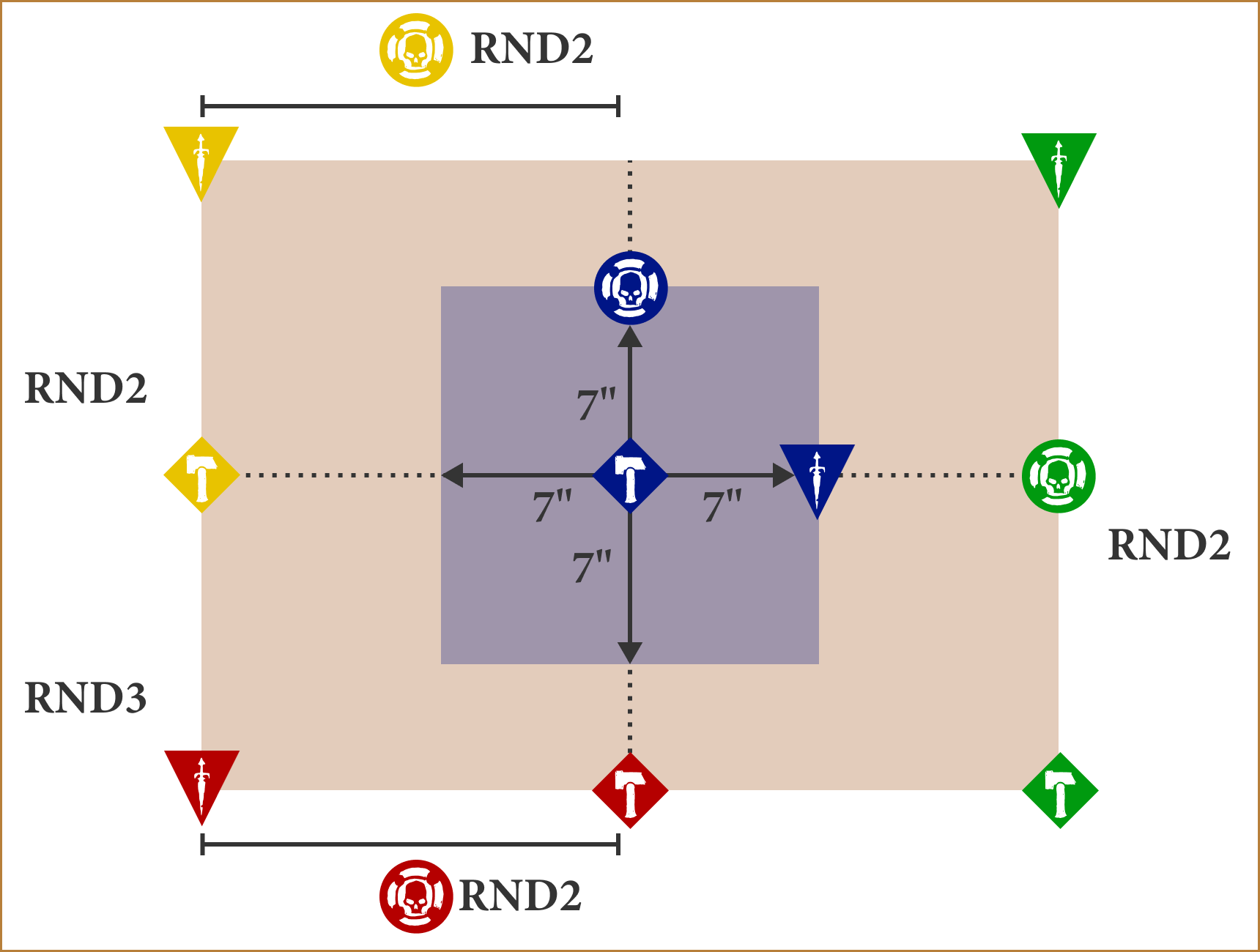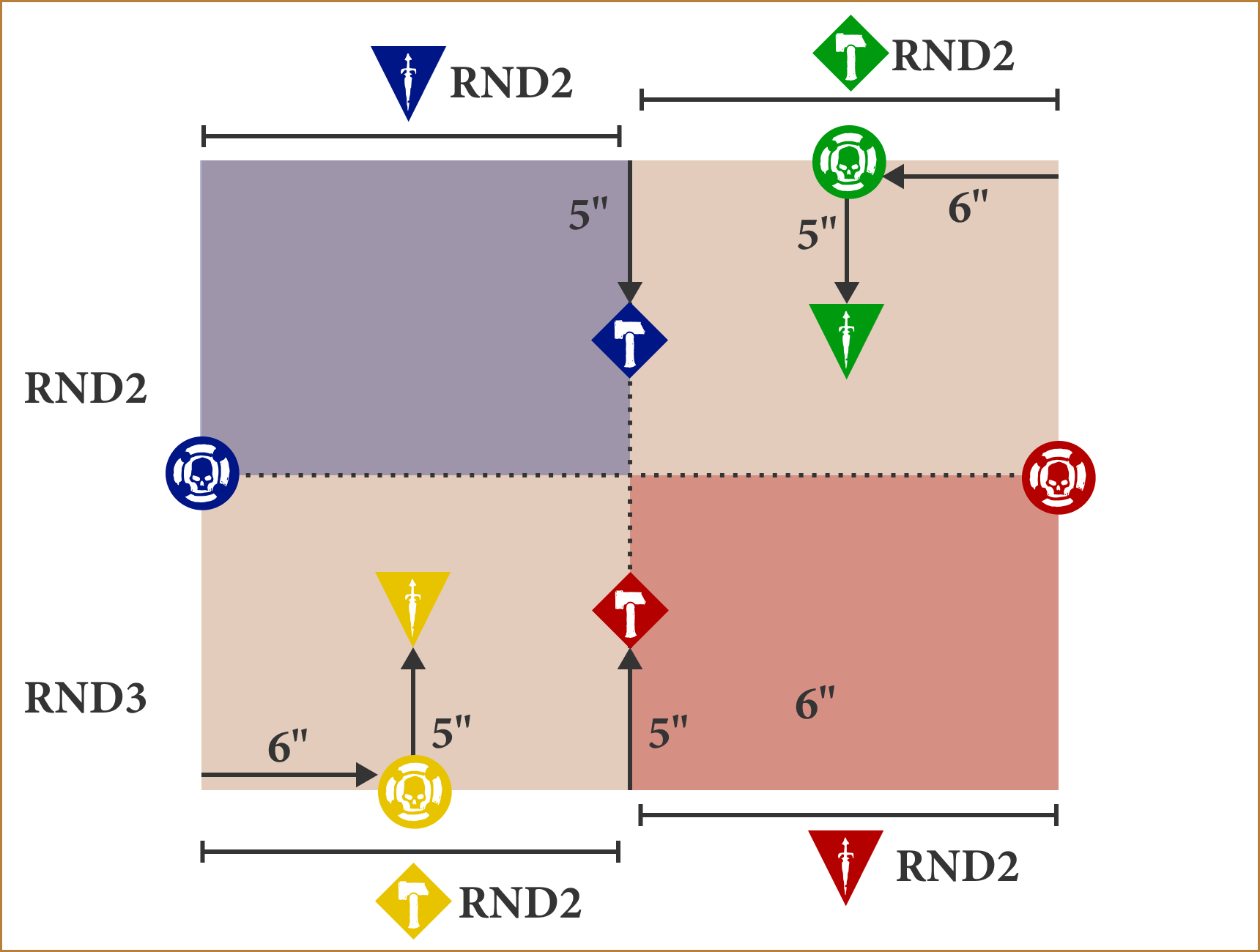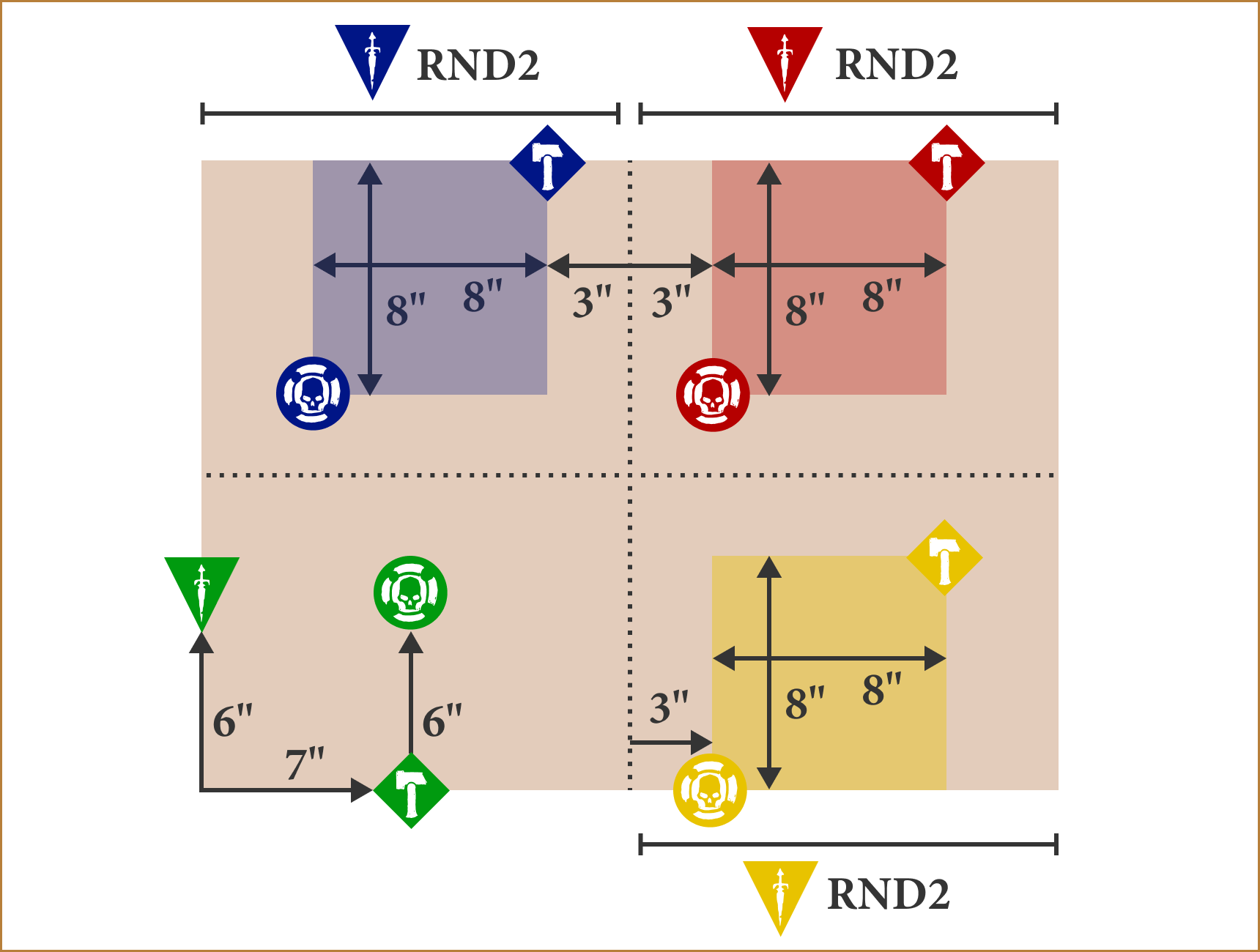Primal Strongholds
Source: Predator and Prey/Bloodhunt (out of print)
This campaign arc tells of a region in the Bloodmad Ravage where warbands seek to establish a more permanent foothold — building up their own fortifications while razing those of their rivals to the ground. Only one warband can claim dominion over this region, but even should they do so, they can expect continued assaults on their position.
Introduction
Primal Strongholds is a campaign arc for 4 players that lasts for 5 battles. In the first 4 battles, each player will defend their fortress twice, and launch two assaults on rival strongholds. In the final battle, the most successful defender(s) will have constructed a formidable stronghold, which their rivals will assault in a Triumph & Treachery free-for-all battle fought between all the players.
Getting Ready
Each player must determine their encampment location. If a player already has an encampment location other than ‘Outskirts of the Gnarlwood', they keep their encampment location. Otherwise, the player rolls 1 dice and consults the table below to determine their encampment location. They do not need to spend any glory to relocate to that location.
| D6 | Result |
|---|---|
| 1-2 | Stranglegrove Swamp |
| 3-4 | ForebodingWatchtower |
| 5-6 | Dead Gnarloak Grove |
At the start of the campaign, each warband's encampment location is secure, even if it was previously threatened or compromised.
Each player is then given a title that is simply used to determine their match-ups in this campaign arc. The four titles are as follow:
- Edgeward
- Gyreward
- Heartward
- Wendward
You can assign these titles however you choose.
Playing Through The Campaign Arc
For each ofthe first 4 rounds ofbattles, consult the following table to see which player is the attacker and which player is the defender. Each player will attack twice and defend twice.
Battle 1
- Heartward attacks, Edgeward defends
- Wendward attacks, Gyreward defends
Battle 2
- Edgeward attacks, Gyreward defends
- Heartward attacks, Wendward defends
Battle 3
- Wendward attacks, Edgeward defends
- Gyreward attacks, Heartward defends
Battle 4
- Edgeward attacks, Heartward defends
- Gyreward attacks, Wendward defends
In each of these battles, use the Fortifications rules.
Do not make the encampment check in the aftermath step of each battle. Instead, if a player lost a battle in which they were the defender, their encampment becomes threatened. If their encampment was already threatened, it instead becomes compromised.
The Final Battle
Once the first 4 rounds of battles have been completed, the players fight one more battle against each other. The outcome of this battle will determine which player is declared the victor. This battle is a Triumph & Treachery free-for-all battle and uses the Nexus of Carnage battleplan below.
Planning Ahead
The final battle of the campaign arc has a set battleplan. This means the players will know how and where their battle groups will deploy before they choose which fighters are in which battle groups. We recommend the players take advantage of this and plan accordingly!
Rewards
In the aftermath sequence of the final battle, each player gains an additional D6 glory and can add 1 to renown rolls they make. In addition, the victor can roll once on the Treasures of the Gnarlwood table. If they roll an artefact that is already borne by a fighter in their warband, they can choose to either re-roll the result or gain an additional D6 glory. Finally, the Victor's encampment location becomes secure.
Campaign Arc Battleplan: Nexus of Carnage
In the climax of this campaign arc, determined fighters have crafted for themselves durable defences within the choking confines of the Gnarlwood. Using whatever resources they can find — bamboo, hone, sinew and fragments of celestite, to name but a few - they have gradually expanded their fortifications. But rival warbands are hungry to claim these shelters for their own, and in a desperate assault try tofind a chink in their foe's defences...
Attacker and Defender
First, determine who the defenders will be. If 1—3 players have an encampment location that is secure, they are the defenders. if no players have a secure encampment location, but 1-3 players have a threatened encampment location, those players are the defenders. Otherwise, the players roll off and the winner is the defender.
Warbands
If there is only one defender or only one attacker, that player picks a warband following the core rules, with the exception that the points limit for their warband is 1200 points.
Each other player, or each player if there is more than one defender and more than one attacker, picks a warband with a points limit of 800 points (following the Triumph & Treachery rules).
Sort the players into an order using a series of roll~offs. Then, in that order, each player picks one of the colours available to them as shown in the table below.
| Number of Defenders | Defender Colours | Attacker Colours |
|---|---|---|
| 1 | Blue | Red, Yellow, Green |
| 2 | Blue, Red | Yellow, Green |
| 3 | Blue, Red, Yellow | Green |
Terrain
Following the Fortifications rules, each defender sets up terrain in the territory that is shaded in their colour, as shown on the deployment map that corresponds to the number of defenders taking part in the battle. If there is more than one defender, those players roll off and the winner chooses the order in which they set up terrain.
Then each attacker sets up the remaining terrain: if there is one attacker, they should set up around 4 pieces of terrain; otherwise, each attacker should set up around 2 pieces of terrain. In either case, they must set up this terrain more than 4" from defender territory. If there is more than one attacker, those players roll off and the winner chooses the order in which they set up terrain.
Deployment
Use the deployment map below that corresponds to the number of defenders in the battle.
1 Defender

2 Defenders

3 Defenders

Victory
Each defender scores 1 victory point each time one of their fighters takes an enemy fighter down with an attack action or an ability.
At the end of each battle round, check each defender's territory. The player who has the highest number of fighters in that territory scores victory points equal to the battle round number, or equal to that number plus 1 if it is not their territory. In addition, a player scores 1 Victory point if their leader is in a defender's territory.
The battle ends after 4 battle rounds. When the battle ends, the player with the most victory points wins the battle.
Twist
Determine a twist as normal.